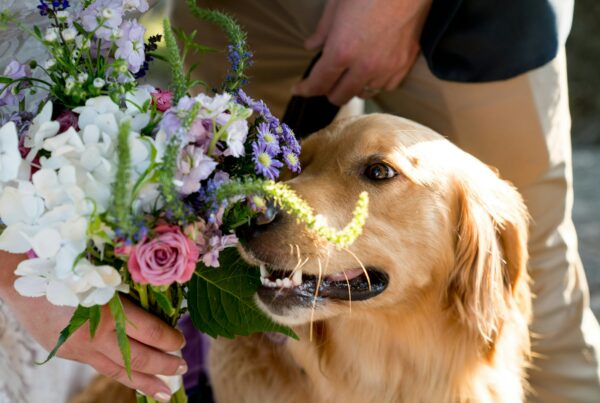IN Chicago, Kristyn Caliendo does forward-bends with a Jack Russell terrier draped around her neck. In Manhattan, Grace Yang strikes a warrior pose while balancing a Shih Tzu on her thigh. And in Seattle, Chantale Stiller-Anderson practices an asana that requires side-stretching across a 52-pound vizsla.
Multimedia
Doga at the Seattle Humane Society.More Photos »
Readers’ Comments
Readers shared their thoughts on this article.
Call it a yogic twist: Downward-facing dog is no longer just for humans.
Ludicrous? Possibly. Grist for anyone who thinks that dog-owners have taken yoga too far? Perhaps. But nationwide, classes of doga — yoga with dogs, as it is called — are increasing in number and popularity. Since Ms. Caliendo, a certified yoga instructor in Chicago, began to teach doga less than one year ago, her classes have doubled in size.
Not everyone in the yoga community is comfortable with this.
“Doga runs the risk of trivializing yoga by turning a 2,500-year-old practice into a fad,” said Julie Lawrence, 60, a yoga instructor and studio owner in Portland, Ore. “To live in harmony with all beings, including dogs, is a truly yogic principle. But yoga class may not be the most appropriate way to express this.”
Appropriate or not, this is how it works: Doga combines massage and meditation with gentle stretching for dogs and their human partners. In chaturanga, dogs sit with their front paws in the air while their human partners provide support. In an “upward-paw pose,” or sun salutation, owners lift dogs onto their hind legs. In a resting pose, the person reclines, with legs slightly bent over the dog’s torso, bolster-style, to relieve pressure on the spine.
Doga instructors are not required to complete certification, though teacher training seminars do exist, like ones taught by Brenda Bryan, 43, a yoga and doga instructor in Seattle who has just written a book on the subject. In general, instructors learn informally by sharing techniques. Guiding these techniques is an agreed-upon, though not officially stated, philosophy: Because dogs are pack animals, they are a natural match for yoga’s emphasis on union and connection with other beings.
Ms. Yang, 39, a financial analyst in Manhattan, has gone to doga classes for more than a year. Though she says that her 10-pound Shih Tzu, Sophie, has helped deepen her stretches by providing extra weight, the main reason she goes is to bond with her dog. “I always leave with a smile,” she said.
Such post-doga smiles run about $15 to $25 a class. Whether this is a bargain or overpriced depends on how — and why — the class is taught. Paula Apro, 40, of Eastford, Conn., owner of an online yoga retail store, tried a class near her home last summer.
“A stuffed animal — but not even a dog-shaped stuffed animal — was used by the instructor,” she said. Owners struggled to get their very real dogs to replicate the stuffed-animal poses, she said, and bags of treats were used to get the dogs to change positions. “It was lunacy,” Ms. Apro recalled. “Peanuts, my retired racer greyhound, didn’t participate at all. Instead, I did downward-facing dog while he ate the most treats he’s ever had in a 60-minute period.”
Ms. Caliendo said such tales are the exception. She offers her class in conjunction with the Royal Treatment Veterinary Spa in Chicago, which specializes in holistic animal care. “In no way is doga for teaching dogs silly tricks,” she said. “The dogs are never manipulated into any type of pose.”
Ms. Caliendo’s classes focus on poses and massage for dogs aimed at improving digestion and heart function, and poses for people that emphasize stress reduction and feeling well.
Ms. Bryan, the author in Seattle, said: “It’s a new field so there can be confusion about what doga is and isn’t.” Her classes are loosely structured and filled with humor. “Who cares if everybody’s facing the same direction and doing exactly the same thing?” she said. “Besides, laughing is spiritual.”
Ms. Bryan said some of her earliest classes were a challenge. “I was brand new to this, and in one class, this dog just wouldn’t stop barking,” she said. “There I was, trying desperately to look tranquil and calm, but inside I was, like, ‘Shut up!’ That was the turning point for me. I mean, this was a dog. Plus, he was having the best time of his life.”
Kari Harendorf, 38, teaches doga in Manhattan. “Jobs are disappearing,” she said. “Mortgage payments are looming. Change is everywhere, but your dog remains steadfast. So, why not spend time together?”
Ms. Harendorf links yoga to reductions in stress hormones, like cortisol, and blood pressure. “People always ask me, ‘Do dogs need yoga?’ ” she said. “I say, ‘No, you need yoga. But your dog needs your attention, and bonding with your pet is good for your health.’ ”
She is saying something many dog owners already know: Were it not for their pets, many people would never take daily walks in the park. By extension, it’s easy to see how taking your dog to doga may be a surefire way to make certain you do yoga yourself.
This article was re-posted by New York Dog Nanny and taken from http://www.nytimes.com/2009/04/09/fashion/09fitness.html.


 Slide Show
Slide Show


